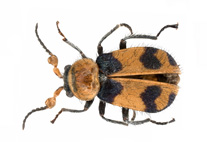Abstract
We examined the Japanese species of the reduviid subfamily Tribelocephalinae. We identified two species of Opistoplatys Westwood, which is the genus with the second largest number of species, and six species of Abelocephala Maldonado, which to date has been referred to as a monotypic genus. All the identified species represent new species and they are described herein under the following names: Opistoplatys minimus sp. nov., Opistoplatys flavolineatus sp. nov., Abelocephala albula sp. nov., Abelocephala araiorum sp. nov., Abelocephala nakatai sp. nov., Abelocephala yaeyamensis sp. nov., Abelocephala major sp. nov., and Abelocephala longiceps sp. nov. Species of Abelocephala can be distinguished from each other based on multiple morphological characters such as body length, ratio of the length to the width of the head, color of the posterior pronotal lobe, shading and pattern of color in the hemelytral basal part, and acuteness or roundness in the apical angle of the outer (larger) cell on the hemelytral membranes. We confirmed that the Japanese tribelocephalines are ground inhabitants living under and within the forest leaf litter. Our results inferred that species of Opistoplatys have positive phototaxis but generally move by walking, whereas species of Abelocephala have negative phototaxis but frequently fly above the forest floor.

